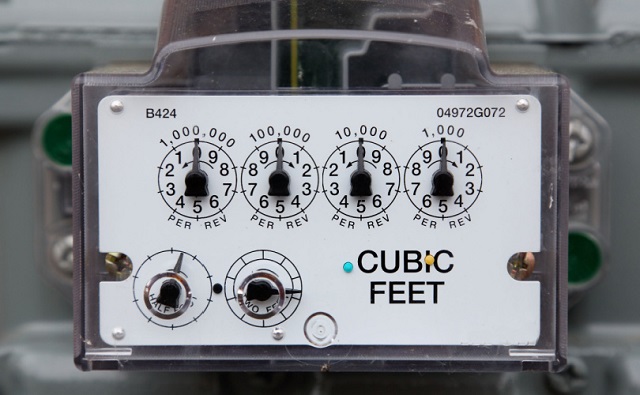Alberta
Another Blow To The Carbon Tax

From Project Confederation
By Josh Andrus
Five years ago, I announced the launch of Project Confederation on Danielle Smith’s CHQR 770 radio show.
That interview changed my life forever.
The project launch was driven by a belief that federal policies – including, but not limited to, the carbon tax – were unfairly targeting Alberta and our economy.
Five years later, we find ourselves opening the next chapter of a long-running saga.
Slowly but surely, Canadians – not just Albertans – have worked out that carbon tax doesn’t make sense, doesn’t work, and isn’t constitutional.
And as the public backlash to the carbon tax grew, the federal government compromised the policy even further, making it even more unpopular and even less constitutional.
On Tuesday, Danielle Smith, now Alberta Premier, announced that her government is going to court to challenge the constitutionality of Ottawa’s selective carbon tax exemption on home heating oils.
The carbon tax, of course, is the levy charged for fuel and combustible waste as outlined in the Greenhouse Gas Pollution Pricing Act and its regulations.
The carbon tax is a tax on everything.
Every product you consume relies on energy-intensive steps in the production cycle – whether it’s the combines harvesting crops, commercial trucks transporting goods, or the electricity powering lights and refrigeration at the grocery store, just to name a few.
This drives costs up throughout the production process in virtually every industry.
The carbon tax also serves as the flagship policy of the Liberal-NDP coalition government, which took office following the 2019 election – just two days before my first appearance on Danielle Smith’s show.
In the eyes of the federal government, the carbon tax represents a beacon to the world, signalling Canada’s new global position as a green, socialist utopia.
In the eyes of the voters, it represents a symbol of the Trudeau government’s unpopularity, a major contributor to ongoing affordability problems and a sluggish economy.
In the eyes of the provinces, it is a clear violation of provincial jurisdiction.
The Act requires provinces to establish these punitive carbon taxes, and if they don’t, the Act allows for Ottawa to impose carbon pricing.
When it was introduced, it faced immediate legal challenges from Alberta, Saskatchewan, and Ontario.
They were joined in opposition to the law by Quebec, Manitoba and New Brunswick – meaning that six provinces, making up over 80% of the Canadian population, believed the carbon tax was a violation of provincial jurisdiction.
The provinces contended that natural resources fall under provincial authority, and that the carbon tax essentially imposes a levy on resource development.
Ottawa, however, argued that climate change constitutes a national crisis and thus falls under federal responsibility.
In 2021, the Supreme Court ruled in favour of the federal government – on the premise that it could be applied as a “minimum national standard.”
“This is in fact the very premise of a federal scheme that imposes minimum national standards: Canada and the provinces are both free to legislate in relation to the same fact situation but the federal law is paramount.”
Just two years later, the Liberal-NDP coalition completely abandoned the minimum national standard by granting a carbon tax carve-out to home heating oils.
Here’s the catch.
In Alberta, Saskatchewan and Manitoba, less than one percent of households use home heating oils to keep their homes warm during cold weather.
That number rises to seven percent in New Brunswick, eighteen percent in Newfoundland and Labrador, thirty-two percent in Nova Scotia and forty percent in Prince Edward Island.
The carbon tax had become such an unpopular policy in Atlantic Canada that the Liberals, trying to stop their collapsing poll numbers, decided to try and regain some votes in the region.
If that weren’t enough, the Liberal government blatantly admitted that the decision was political.
On CTV’s Question Period, Rural Economic Development Minister Gudie Hutchings said “I can tell you, the (Liberal) Atlantic caucus was vocal with what they’ve heard from their constituents, and perhaps they need to elect more Liberals in the Prairies so that we can have that conversation, as well.”
So much for the “minimum national standard.”
Immediately, the constitutionality of the carbon tax was called into question.
Saskatchewan Premier Scott Moe said the move was “not about fairness or about families, it’s only about votes.”
Moe moved swiftly, announcing that SaskEnergy – the Crown corporation that supplies natural gas to residents – would no longer collect or remit the carbon tax on home heating bills in Saskatchewan.
In a misguided effort to curry political favour in the Atlantic provinces, the Liberals have completely compromised the legal standing of the carbon tax and opened the door for provinces to explore new legal avenues against their signature policy.
Now, the Alberta government is seizing that opportunity by filing an application for judicial review of the exemption with the Federal Court, requesting a declaration that the exemption is “both unconstitutional and unlawful.”
“Albertans simply cannot stand by for another winter while the federal government picks and chooses who their carbon tax applies to,” Smith said in a statement. “Since they won’t play fair, we’re going to take the federal government back to court.”
Minister of Justice Mickey Amery added that:
“This exemption is not only unfair to the vast majority of Canadians, but it is also unlawful as the federal government does not have the authority to make special exemptions for certain parts of the country under the Greenhouse Gas Pollution Pricing Act.”
“The federal government isn’t even following its own laws now. Someone needs to hold them accountable, and Alberta is stepping up to do just that.”
The carbon tax has always been unfair to western Canadians, where households use more energy per capita, thanks to our geography and climate.
In a press conference, Danielle Smith went further, saying:
“We’re calling on (the federal government) to repeal the carbon tax. We’ve been calling for that for years. The retail carbon tax is just punitive to taxpayers. It’s punitive to consumers.”
We agree.
It adds an additional expense at every level of the economy, affecting everything from home heating to transportation, and it creates an environment of higher prices on the goods and services we all rely on.
It’s time to take the action that should have been taken long ago.
It’s time to repeal the carbon tax.
Please sign this petition and join our effort to hold the federal government accountable:
Once you’ve signed, please share with your friends, family, and every Canadian.
Regards,
Josh Andrus
Executive Director
Project Confederation
Alberta
Premier Smith: Canadians support agreement between Alberta and Ottawa and the major economic opportunities it could unlock for the benefit of all

From Energy Now
By Premier Danielle Smith
Get the Latest Canadian Focused Energy News Delivered to You! It’s FREE: Quick Sign-Up Here
If Canada wants to lead global energy security efforts, build out sovereign AI infrastructure, increase funding to social programs and national defence and expand trade to new markets, we must unleash the full potential of our vast natural resources and embrace our role as a global energy superpower.
The Alberta-Ottawa Energy agreement is the first step in accomplishing all of these critical objectives.
Recent polling shows that a majority of Canadians are supportive of this agreement and the major economic opportunities it could unlock for the benefit of all Canadians.
As a nation we must embrace two important realities: First, global demand for oil is increasing and second, Canada needs to generate more revenue to address its fiscal challenges.
Nations around the world — including Korea, Japan, India, Taiwan and China in Asia as well as various European nations — continue to ask for Canadian energy. We are perfectly positioned to meet those needs and lead global energy security efforts.
Our heavy oil is not only abundant, it’s responsibly developed, geopolitically stable and backed by decades of proven supply.
If we want to pay down our debt, increase funding to social programs and meet our NATO defence spending commitments, then we need to generate more revenue. And the best way to do so is to leverage our vast natural resources.
At today’s prices, Alberta’s proven oil and gas reserves represent trillions in value.
It’s not just a number; it’s a generational opportunity for Alberta and Canada to secure prosperity and invest in the future of our communities. But to unlock the full potential of this resource, we need the infrastructure to match our ambition.
There is one nation-building project that stands above all others in its ability to deliver economic benefits to Canada — a new bitumen pipeline to Asian markets.
The energy agreement signed on Nov. 27 includes a clear path to the construction of a one-million-plus barrel-per-day bitumen pipeline, with Indigenous co-ownership, that can ensure our province and country are no longer dependent on just one customer to buy our most valuable resource.
Indigenous co-ownership also provide millions in revenue to communities along the route of the project to the northwest coast, contributing toward long-lasting prosperity for their people.
The agreement also recognizes that we can increase oil and gas production while reducing our emissions.
The removal of the oil and gas emissions cap will allow our energy producers to grow and thrive again and the suspension of the federal net-zero power regulations in Alberta will open to doors to major AI data-centre investment.
It also means that Alberta will be a world leader in the development and implementation of emissions-reduction infrastructure — particularly in carbon capture utilization and storage.
The agreement will see Alberta work together with our federal partners and the Pathways companies to commence and complete the world’s largest carbon capture, utilization and storage infrastructure project.
This would make Alberta heavy oil the lowest intensity barrel on the market and displace millions of barrels of heavier-emitting fuels around the globe.
We’re sending a clear message to investors across the world: Alberta and Canada are leaders, not just in oil and gas, but in the innovation and technologies that are cutting per barrel emissions even as we ramp up production.
Where we are going — and where we intend to go with more frequency — is east, west, north and south, across oceans and around the globe. We have the energy other countries need, and will continue to need, for decades to come.
However, this agreement is just the first step in this journey. There is much hard work ahead of us. Trust must be built and earned in this partnership as we move through the next steps of this process.
But it’s very encouraging that Prime Minister Mark Carney has made it clear he is willing to work with Alberta’s government to accomplish our shared goal of making Canada an energy superpower.
That is something we have not seen from a Canadian prime minister in more than a decade.
Together, in good faith, Alberta and Ottawa have taken the first step towards making Canada a global energy superpower for benefit of all Canadians.
Danielle Smith is the Premier of Alberta
Alberta
A Memorandum of Understanding that no Canadian can understand

From the Fraser Institute
The federal and Alberta governments recently released their much-anticipated Memorandum of Understanding (MOU) outlining what it will take to build a pipeline from Alberta, through British Columbia, to tidewater to get more of our oil to markets beyond the United States.
This was great news, according to most in the media: “Ottawa-Alberta deal clears hurdles for West Coast pipeline,” was the top headline on the Globe and Mail’s website, “Carney inks new energy deal with Alberta, paving way to new pipeline” according to the National Post.
And the reaction from the political class? Well, former federal environment minister Steven Guilbeault resigned from Prime Minister Carney’s cabinet, perhaps positively indicating that this agreement might actually produce a new pipeline. Jason Kenney, a former Alberta premier and Harper government cabinet minister, congratulated Prime Minister Carney and Premier Smith on an “historic agreement.” Even Alberta NDP Leader Naheed Nenshi called the MOU “a positive step for our energy future.”
Finally, as Prime Minister Carney promised, Canada might build critical infrastructure “at a speed and scale not seen in generations.”
Given this seemingly great news, I eagerly read the six-page Memorandum of Understanding. Then I read it again and again. Each time, my enthusiasm and understanding diminished rapidly. By the fourth reading, the only objective conclusion I could reach was not that a pipeline would finally be built, but rather that only governments could write an MOU that no Canadian could understand.
The MOU is utterly incoherent. Go ahead, read it for yourself online. It’s only six pages. Here are a few examples.
The agreement states that, “Canada and Alberta agree that the approval, commencement and continued construction of the bitumen pipeline is a prerequisite to the Pathways project.” Then on the next line, “Canada and Alberta agree that the Pathways Project is also a prerequisite to the approval, commencement and continued construction of the bitumen pipeline.”
Two things, of course, cannot logically be prerequisites for each other.
But worry not, under the MOU, Alberta and Ottawa will appoint an “Implementation Committee” to deliver “outcomes” (this is from a federal government that just created the “Major Project Office” to get major projects approved and constructed) including “Determining the means by which Alberta can submit its pipeline application to the Major Projects Office on or before July 1, 2026.”
What does “Determining the means” even mean?
What’s worse is that under the MOU, the application for this pipeline project must be “ready to submit to the Major Projects Office on or before July 1, 2026.” Then it could be another two years (or until 2028) before Ottawa approves the pipeline project. But the MOU states the Pathways Project is to be built in stages, starting in 2027. And that takes us back to the circular reasoning of the prerequisites noted above.
Other conditions needed to move forward include:
The private sector must construct and finance the pipeline. Serious question: which private-sector firm would take this risk? And does the Alberta government plan to indemnify the company against these risks?
Indigenous Peoples must co-own the pipeline project.
Alberta must collaborate with B.C. to ensure British Columbians get a cut or “share substantial economic and financial benefits of the proposed pipeline” in MOU speak.
None of this, of course, addresses the major issue in our country—that is, investors lack clarity on timelines and certainty about project approvals. The Carney government established the Major Project Office to fast-track project approvals and provide greater certainty. Of the 11 project “winners” the federal government has already picked, most either already had approvals or are already at an advanced stage in the process. And one of the most important nation-building projects—a pipeline to get our oil to tidewater—hasn’t even been referred to the Major Project Office.
What message does all this send to the investment community? Have we made it easier to get projects approved? No. Have we made things clearer? No. Business investment in Canada has fallen off a cliff and is down 25 per cent per worker since 2014. We’ve seen a massive outflow of capital from the country, more than $388 billion since 2014.
To change this, Canada needs clear rules and certain timelines for project approvals. Not an opaque Memorandum of Understanding.
-

 MAiD2 days ago
MAiD2 days agoFrom Exception to Routine. Why Canada’s State-Assisted Suicide Regime Demands a Human-Rights Review
-

 Business1 day ago
Business1 day agoCarney government should privatize airports—then open airline industry to competition
-

 Business2 days ago
Business2 days agoWhat’s Going On With Global Affairs Canada and Their $392 Million Spending Trip to Brazil?
-

 Energy1 day ago
Energy1 day agoCanada following Europe’s stumble by ignoring energy reality
-

 Automotive2 days ago
Automotive2 days agoCanada’s EV Mandate Is Running On Empty
-

 Business2 days ago
Business2 days agoWhy Does Canada “Lead” the World in Funding Racist Indoctrination?
-

 Automotive2 days ago
Automotive2 days agoTrump Deals Biden’s EV Dreams A Death Blow
-

 Business1 day ago
Business1 day agoLoblaws Owes Canadians Up to $500 Million in “Secret” Bread Cash






